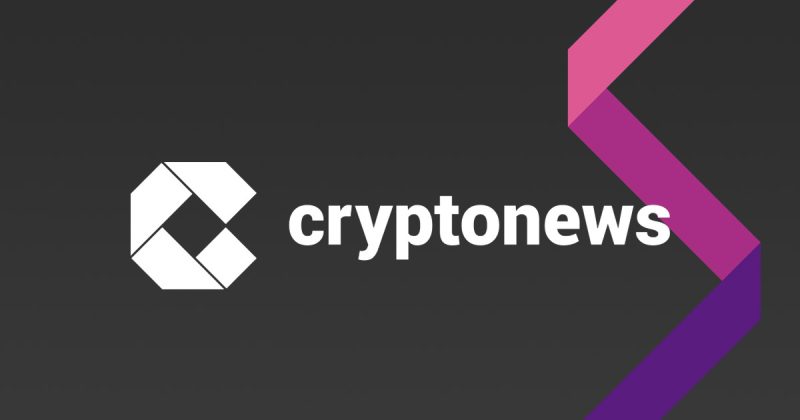Money laundering has been one of the most plaguing issues in the crypto industry for over a decade now. In 2023 alone, a staggering $22.2 billion was laundered across the globe through cryptocurrencies. These funds are constantly funneled into illegal activities like drug trade, human trafficking, weapons trade, and more. This is a key reason why regulators around the globe heavily scrutinize crypto.
This persistent threat is also driving the global market for crypto Anti-Money Laundering (AML) compliance solutions. As of 2023, the market was valued at approximately $686.89 million and is projected to exceed $1 billion by 2025, with a compound annual growth rate (CAGR) of around 17.6% from 2024 to 2031, according to Verified Market Research. This growth is fueled by the rising need for comprehensive compliance frameworks in response to stricter regulatory requirements and the proliferation of decentralized finance platforms, which present new challenges for traditional AML methods.
Market Drivers and Forecast for Crypto AML Compliance Solutions
The global crypto AML compliance solutions market size came to $686 million in 2023, and is estimated to reach one billion by 2025. It’s projected to grow even further to reach $2.49 billion by 2031, according to the latest VMR report. The market is expected to grow at a CAGR of 17.6% from 2024 to 2031.
This growth is fueled by several trends. First of all, governments and financial authorities worldwide are tightening cryptocurrency regulations to combat money laundering and other illicit activities (like FATF does, and the recent MiCA regulation is a great example as well).
As a result, more crypto projects and businesses are looking to adopt AML solutions to comply with this intense regulatory environment. The general increase in crypto transaction volumes is driving this segmentation and growth. As digital currencies gain traction, the need for real-time monitoring and detection of suspicious activities intensifies, driving demand for robust AML solutions.
The integration of AI and machine learning significantly drives the market, enhancing money laundering detection and prevention. AI-powered solutions allow AML platforms to analyze vast datasets and flag suspicious transaction patterns in real time with greater efficiency. Companies like Chainalysis, Elliptic, and AMLBot are at the forefront of using AI to analyze streams of transaction data, identify complex patterns, and detect suspicious activities with greater accuracy.
The rapid expansion of DeFi services has also introduced new challenges for AML compliance. Cybercriminals are often taking advantage of DeFi services like mixers or liquidity pools to mask their illicit funds and make them untraceable. This has led to the development of specialized AML tools tailored to the unique needs of the DeFi ecosystem, further driving market growth.
The Current State of the Geographical Market
North America is currently the most lucrative market for crypto AML solutions. It’s not surprising, given the region’s strict regulatory environment, especially in the US. Over the years, the US has prosecuted several high-profile crypto money laundering cases, which have set precedence for regulatory frameworks like the Financial Action Task Force (FATF) guidelines and the Financial Crimes Enforcement Network (FinCEN) directives.
Europe closely follows, holding 18.6% of the market share. The region’s focus on comprehensive financial regulations and a uniform legal framework for cryptocurrency use contribute to its strong position in the market. However, the Asia-Pacific region is rapidly emerging as a notable player, with a market size of $404.53 million.
Conversely, the Middle East and Africa currently represent the least lucrative market segment, valued at $55.74 million. Despite this, the region is showing promising signs of growth due to rising cryptocurrency adoption. According to the latest reports, the average daily number of crypto traders in the Middle East and Africa exceeded 500,000 in February 2024, reflecting a 51% year-over-year growth. As crypto adoption increases, the demand for AML solutions in this region is expected to rise.
AML Market Fragmentation
In 2023, software solutions dominated the market, accounting for 65.98% of the total share – and they are expected to grow at an impressive CAGR of 17.85% over the forecast period. Services followed closely, with a market value of $233.69 million. Large enterprises led the market with a 61.84% share, while SMBs, although smaller in market size, are anticipated to grow at the highest rate (18.27% CAGR).
Positively, the market is highly fragmented and not dominated by only a handful of major entities. Currently, the AML solutions market features numerous key players like AMLBot, Chainalysis, Elliptic, Identity.com, and Bitquery Inc., among others. Companies are leveraging both organic and inorganic strategies to bolster their market positions. These include product development, acquisitions, partnerships, and business expansions. Investments in research, new product launches, and supply chain optimization are also common approaches to maintain competitive advantage.
Final Thoughts
The ongoing rise of the crypto market and increasing regulation create significant opportunities for advancing AML technologies. Together with crypto adoption grows the demand for sophisticated compliance solutions to meet regulatory standards and ensure security. As companies and regulators alike navigate this evolving landscape, the development and implementation of effective AML tools will be pivotal in safeguarding the integrity of the global financial system.
The post Crypto AML Solutions Market to Reach $1 Billion by 2025: What’s Driving it? appeared first on Cryptonews.


